German Warmblood horses have long been admired for their grace, versatility, and athleticism, making them a highly sought-after breed for sport and recreation. This exploration into the breeding of these magnificent animals will provide an insightful understanding of their rich history, vital genetic aspects, desirable traits and conformation, practical breeding processes, and the essential care and management of breeding stock and foals. Whether a seasoned breeder or an enthusiastic admirer, this comprehensive guide offers valuable knowledge for anyone interested in learning about the intricate art of breeding German Warmblood horses.
Table of Contents (Horspedia)
1. The history and origin of German Warmbloods
Origins and Development of German Warmblood Breeds
German Warmbloods are a group of horse breeds originating from Germany that are highly sought-after for their athleticism, grace, and versatility in various equestrian disciplines. These breeds have a rich history, with their development being heavily influenced by the unique needs and preferences of their respective geographical regions.
The history of German Warmbloods can be traced back thousands of years, but significant development occurred in the late 18th and early 19th centuries. Breeders in various German regions began carefully selecting and cross-breeding local horses with foreign breeds to create versatile riding and carriage horses that would suit the needs of their specific communities. This selective breeding process resulted in the development of several distinct German Warmblood breeds, such as the Hanoverian, the Holsteiner, the Oldenburg, and the Westphalian, to mention a few.
While there are a number of German Warmblood breeds, they all share certain desirable features that make them excellent sport horses. These include an elegant overall appearance, fluid and balanced gaits, a strong and well-developed topline, and a calm and intelligent temperament. Additionally, these breeds gained recognition for their ability to perform at the highest level in dressage, show jumping, and eventing competitions. These features and achievements have contributed to the worldwide appeal of German Warmbloods.
The Role of Studbooks and Breed Registries
The establishment of studbooks and breed registries played a crucial role in the development of German Warmbloods. For each breed, a studbook was created to carefully record and maintain the pedigree and performance of individual horses. Breeders were required to adhere to strict breeding principles to ensure the improvement and preservation of their respective breed’s characteristics.
In addition to the primary breed registries, an overarching organization, the German Equestrian Federation (Deutsche Reiterliche Vereinigung, or FN), was formed in 1905 to oversee all equestrian activities, including breeding, in the country. This organization played a significant role in establishing consistent breeding objectives and standards across the different Warmblood breeds and ensured that breeders remained committed to improving their respective breeds.
Modern German Warmblood Breeding
In recent years, German Warmblood breeding has become increasingly specialized as breeders focus on refining and enhancing particular traits required for success in specific equestrian disciplines. For instance, some breeders concentrate on producing elite dressage horses, while others aim to produce top show jumpers or eventers.
Breeding programs typically involve carefully selecting mares and stallions that possess the desired characteristics and have demonstrated success in their sporting careers or in the careers of their offspring. Additionally, breeders conduct regular performance tests, known as mare and stallion inspections, to evaluate and assess the quality and potential of their breeding stock.
Advancements in veterinary science and technology have also played a role in the development of German Warmblood breeding. Breeders now have access to advanced reproductive technologies, such as artificial insemination and embryo transfer, which make it possible to produce offspring from desired sire and dam pairings regardless of the geographical location of the horses.
The international success of German Warmbloods in sport continues to influence breeding practices and advance the development of new generations of exceptional sport horses, maintaining their reputation as some of the best equestrian athletes in the world. As a result, German Warmbloods will likely remain highly sought-after among riders and competitors across the globe, ensuring a continued interest in their breeding and development.
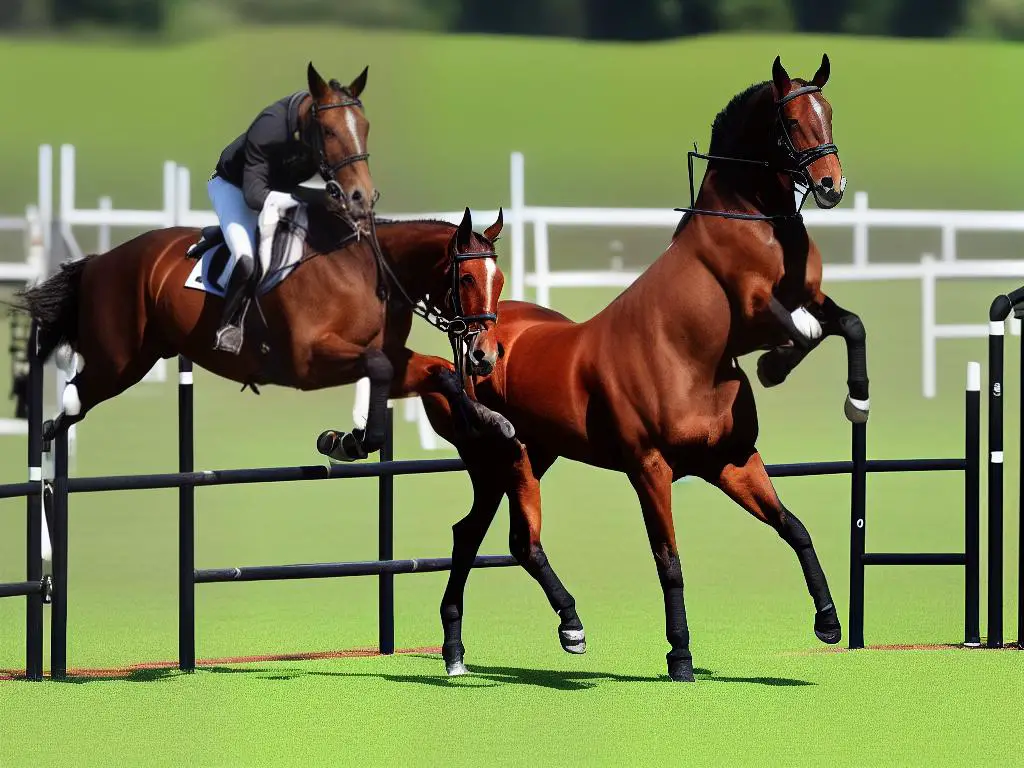
2. Overall breeding principles and genetic aspects
Understanding Bloodlines
When it comes to breeding top-quality German Warmblood horses, understanding the importance of bloodlines is essential. Bloodlines represent the genetic heritage of a horse, and the combination of desirable traits present in the lineage of well-established breeders can produce exceptional offspring. Bloodlines heavily influence the qualities of a horse, including temperament, conformation, movement, and athletic ability. German Warmblood breeders strive to produce horses that excel in these areas, particularly for competitive disciplines such as dressage, show jumping, and eventing.
It is vital to study the pedigrees of potential breeding stock for several generations back, as this ensures the desired qualities are consistently present in a horse’s ancestry. A successful breeding program tends to be based on a small number of exceptional bloodlines, each with a proven history of producing high-quality offspring. Breeders may also introduce different bloodlines to enhance specific attributes or produce a particular cross with desired characteristics.
Genetic Aspects
When considering the genetic aspects of breeding German Warmbloods, it is crucial to keep in mind the fundamental goal of producing healthy, athletic, and well-rounded horses. Selective breeding methods are used to enhance the strengths and minimize the weaknesses of each parent, ultimately producing the best possible offspring.
Inbreeding is generally avoided, as it can lead to undesirable genetic traits being passed on and emphasizes negative characteristics within the breed. Instead, breeders focus on using unrelated bloodlines with complementary qualities. German Warmblood breeding programs often use performance-testing methods to measure the physical and mental qualities of prospective breeding stock, helping to identify which horses carry the desirable genetics needed to produce successful offspring.
One concern for breeders is identifying and avoiding inheritable diseases or genetic abnormalities within the breeding population. Knowledge of a horse’s ancestry and proper genetic testing can help breeders avoid the risks of producing offspring with health conditions. Additionally, responsible breeders aim to improve the health of the breed by actively selecting for specific traits that contribute to overall wellbeing, such as strong immune systems and sound conformation.
Breed Registries and Associations
Breed registries and associations play a critical role in the German Warmblood breeding world, as they serve as governing bodies responsible for maintaining strict breed standards and preserving the purity of bloodlines. These organizations oversee various aspects of the breeding process, such as pedigree documentation, approvals for breeding stock, inspections, and performance testing, all to ensure the ultimate goal of producing top-quality German Warmblood horses.
Registered horses are typically branded with the organization’s logo as a means of identification and verification of pedigree. Moreover, breed registries and associations offer valuable resources for breeders, including educational opportunities, networking, and access to potential breeding stock.
Some of the most influential German Warmblood registries include the Hanoverian, Oldenburg, Westphalian, and Holsteiner Verband. Each registry’s breed standards and guidelines contribute to maintaining and improving the overall quality of German Warmbloods. By adhering to these guidelines, breeders can ensure they are producing horses that meet the high standards set by these associations, thus increasing the chances of producing successful and competitive offspring.
Introduction to German Warmblood Breeding
When it comes to breeding high-quality German Warmblood horses, understanding bloodlines, prioritizing genetic health, and maintaining strict breed standards through the involvement of registries and associations play crucial roles. The primary goal for breeders is to produce horses with exceptional conformation, movement, temperament, and athletic ability while simultaneously focusing on improving the health and welfare of the breed as a whole. By integrating these essential aspects with proper care, management, and training, breeders can successfully produce German Warmblood horses that excel in the competitive equestrian world.
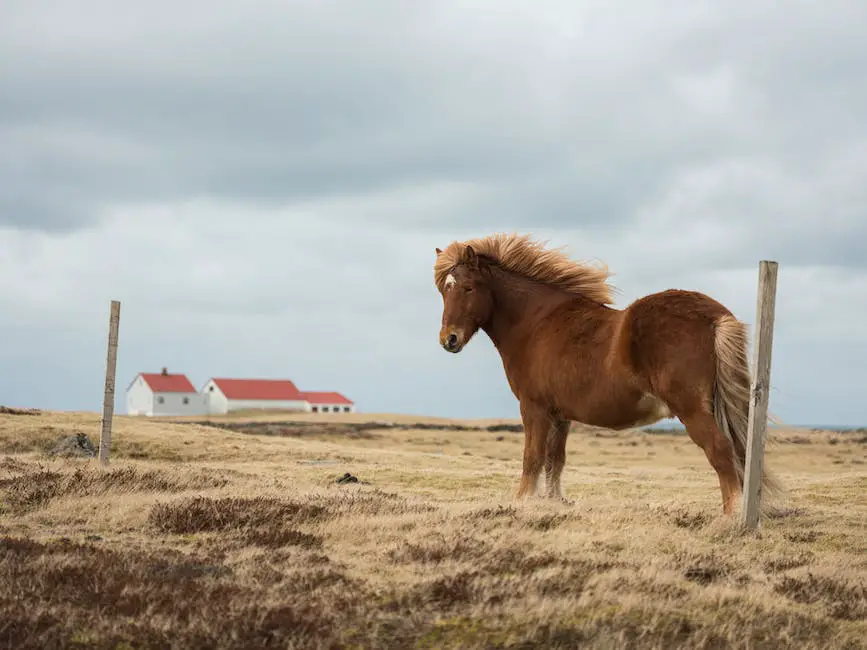
3. Traits and conformation of a healthy and ideal German Warmblood
Physical Traits and Characteristics in German Warmbloods
In the breeding process of German Warmbloods, considering their physical traits and characteristics is crucial. These horses are known for their harmonious, noble, and athletic appearance, usually standing between 15.2 and 17.3 hands high (62 to 70 inches) at the withers and featuring well-muscled bodies. A balanced conformation is essential for their overall performance capabilities and reduced risk of injury.
The head of an ideal German Warmblood should be expressive, refined, and proportional to the rest of the body, with large, bright eyes and attentive ears. Breeders prefer a straight or slightly concave profile and avoid coarseness or a dish-type face. The neck of these horses should be long, muscular, and well-attached to the withers and shoulder, allowing for proper carriage and freedom of movement.
A strong and sloping shoulder, coupled with a wide and deep chest, enables these horses to generate powerful, fluid movements. A relatively short and strong back, along with a well-sprung ribcage, provides ample space for their heart and lungs. The ideal German Warmblood has a long, wide, and slightly sloping croup, leading to a properly set, well-carried tail. Additionally, strong, clean legs with well-defined joints and short, sturdy pasterns are indispensable for durability and soundness.
Desirable Temperament Traits
German Warmbloods are valued for their exceptional temperament traits, including their trainability, bravery, and willingness to work. When breeding these horses, breeders should prioritize selecting horses with a calm, balanced, and friendly nature. They should willingly accept aids and commands from their rider without displaying resistance or anxiety.
Intelligent and sensitive, these horses can quickly learn new tasks and should have the aptitude for retaining this knowledge. This attribute is of particular importance when breeding for sport disciplines such as dressage, show jumping, or eventing. Through careful selection of breeding stock, breeders can enhance these innate qualities, creating horses with good-natured dispositions that excel in multiple disciplines.
Selecting High-Quality Breeding Stock
To produce top-quality German Warmbloods, selecting breeding stock with exceptional conformation, athleticism, and temperament is crucial. Breeders must examine each horse’s pedigree and performance history, focusing on achievements in sport disciplines such as dressage, show jumping, or eventing to ensure potential offspring inherit desirable traits.
Prior to breeding, prospective horses should undergo veterinary examinations and radiographs to assess overall health and detect any potential issues. This thorough screening minimizes the risk of passing on genetic flaws or conformation faults to offspring.
Evaluating temperament and trainability is also essential, as these characteristics directly impact a horse’s performance and suitability for various disciplines. A horse displaying a strong work ethic, bravery, and a calm, responsive demeanor is a valuable addition to any breeding program.
By paying meticulous attention to details such as physical conformation, temperament traits, and performance history, breeders can perpetuate the ideal characteristics, athleticism, and exceptional temperament that make German Warmbloods highly sought-after in multiple sport disciplines. This process ensures the continued legacy of this versatile, intelligent, and beautiful breed.
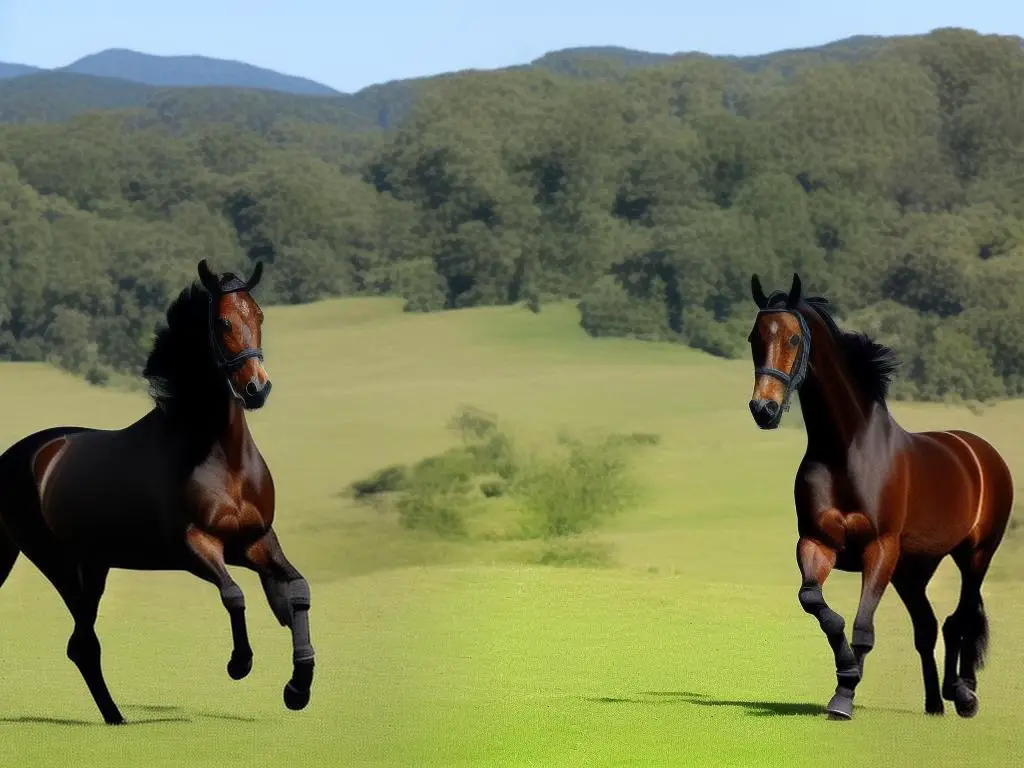
4. The breeding process and mare & stallion selection
The Breeding Process and Mare & Stallion Selection
Following the selection of high-quality breeding stock, the next step in breeding German Warmbloods is to understand the mare and stallion’s genetics, conformation, and temperament to ensure they complement each other. Selecting an ideal mare and stallion pairing is essential for producing offspring with desirable traits for sport or pleasure riding.
Furthermore, an understanding of the specific lineage influences is essential for breeders to ensure the continued standard and characteristics the breed is known for. A well-matched pairing will not only produce well-conformed, athletic, and temperamentally sound offspring but also continue maintaining the legacy of the German Warmblood breed.
Preparing the Mare and Stallion for Breeding
Before breeding, it is crucial to ensure that both the mare and the stallion are in optimal health and condition. Conducting a thorough health examination, including testing for sexually transmitted diseases and assessing overall physical and reproductive health, is an essential step in the breeding process. It is also important to ensure that both horses are up-to-date on their vaccinations and deworming treatments.
For the mare, she should be in proper weight and in good physical condition. Her cycle should be regular, and she should display receptive behavior toward the stallion. A breeding soundness examination, which assesses the mare’s reproductive system and hormone levels, can provide insight into her fertility status. Ultrasonography is often used during the breeding season to monitor the mare’s follicle development and determine the ideal time for breeding.
Similarly, the stallion should be in good health and physical condition. A breeding soundness examination can evaluate his semen quality, test for any abnormalities in the reproductive organs, and determine if he is fertile and capable of producing suitable offspring. The stallion’s libido and temperament are also essential factors, as these can impact the ease and effectiveness of the breeding process.
Best Time for Breeding
Timing is a crucial aspect of breeding German Warmbloods, as it can significantly impact the success of conception. The mare’s natural breeding season generally occurs between April and October when the lengthening daylight hours stimulate her hormonal cycles. Most mares will come into heat (estrus) approximately every 21 days during this period. The ideal time for breeding is when the mare is in the peak of her estrus cycle, which typically lasts 5-7 days. Ultrasonography can help identify the most opportune time for breeding by tracking the mare’s follicle development during her cycle.
It’s essential to monitor the mare’s behavior for signs of estrus, such as increased urination, tail raising, and “winking,” which refers to the opening and closing of her vulva. Once these signs are observed, arrangements should be made with the stallion’s owner for the breeding to take place.
Mare and Stallion Selection
In the process of breeding German Warmbloods, it’s essential to carefully evaluate and select both the mare and stallion, considering several factors such as:
- Pedigree: Both the mare and stallion should possess strong performance bloodlines and notable individuals within the German Warmblood breed. A reputation for excellence in sports like dressage, show jumping, or eventing is crucial when selecting suitable breeding partners.
- Conformation: The physical appearance and structure of the mare and stallion contribute to their offspring’s overall success and athleticism. Choose horses with balanced conformation, free of obvious faults or defects that may negatively impact their performance or soundness.
- Temperament: Desirable temperaments in both mare and stallion are vital, as these will be passed down to their foals. Horses with calm, trainable personalities are generally preferred, as they can accommodate riders with various skill levels.
- Performance Records: Both the mare and stallion should have proven success in their respective disciplines. Successful performance records demonstrate athleticism, soundness, and the ability to handle the stresses of high-level competition.
- Compatibility: The mare and stallion should complement each other’s strengths and weaknesses to produce a foal that inherits the best qualities of both parents while minimizing the passing on of any undesirable traits.
Additionally, maintaining the mare and stallion’s health and proper timing during the breeding season is crucial for a successful outcome. By considering these factors, breeders aim to produce high-quality foals that excel in various equestrian disciplines and contribute significantly to the breed’s gene pool.
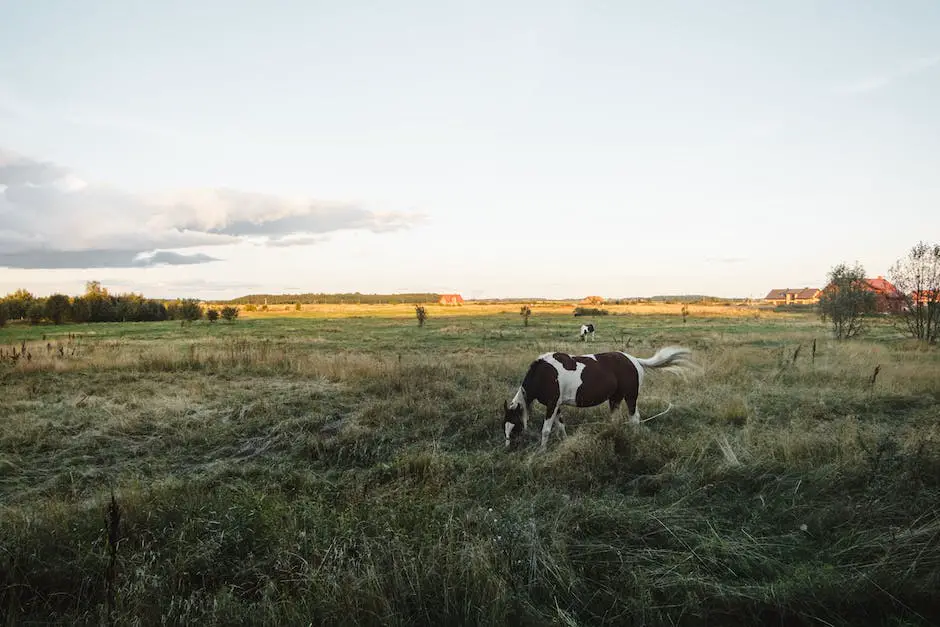
5. The care and management of breeding stock and foals
Feeding and Nutrition
Beyond selecting the right breeding stock, proper feeding and nutrition are crucial for the reproductive success of German Warmbloods. Each horse in the breeding process, including mares, stallions, and foals, has unique nutritional needs that must be met.
Pregnant or lactating mares need a higher calorie intake to support both their growing foals and milk production. This can be achieved by providing quality forage, such as hay or pasture, and supplementing with concentrates if necessary.
Stallions also require a balanced diet to maintain their weight and enhance fertility. Quality forage should be the primary component of their diet, with concentrates added if needed. Foals have unique nutritional needs that change as they grow and develop. During the early stages of life, they must have access to their mother’s milk, gradually transitioning to forage and concentrates as they mature.
By ensuring that the breeding stock receives the necessary nutrition, breeders can maximize the chances of producing healthy, strong, and successful German Warmblood offspring.
Housing and Environment
The environment in which German Warmblood breeding stock and foals are housed is crucial for their overall health and well-being. Ideally, they should have access to spacious, clean pastures where they can freely move and graze. Mares and their foals should be provided with shelter, such as a run-in shed or stable, where they can seek refuge from inclement weather or excessive heat.
Stallions may require separate housing, as they can be more territorial. Providing safe and secure fencing is essential to prevent injury or escape. Additionally, it’s important to maintain proper sanitation and cleanliness in the breeding area to reduce the risk of infectious diseases and maintain overall herd health.
Health Care
As with any breed of horse, proper health care is vital to the well-being of German Warmblood breeding stock and their foals. Regular veterinary care, including vaccinations, deworming, and dental care, should be a part of their management routine. Mares should be closely monitored during pregnancy for any signs of complications and receive regular check-ups from a veterinarian.
Additionally, mares should be carefully monitored during foaling to ensure the process goes smoothly and to provide assistance if necessary. Foals should receive prompt veterinary care after birth, with particular attention paid to their immunoglobulin levels via the mother’s colostrum. This helps to ensure they have adequate immunity during the first few months of life.
Handling and Socialization
Handling German Warmblood breeding stock and foals from an early age is essential to their development and future success as sport horses. This includes regular grooming, leading, and exposure to different environments and stimuli. Foals should be introduced to human contact early on to develop trust and familiarity, which will benefit them later in life, especially if they are destined for careers as competition horses.
For foals, it’s important that they learn to accept a halter and lead rope, as well as becoming accustomed to having their feet handled and eventually trimmed by a farrier. Incorporating positive reinforcement techniques during handling can help to create a strong bond between the horse and handler and establish a foundation for future training.
Conclusion
The proper care and management of German Warmblood breeding stock and foals play a significant role in the success of a breeding program. This involves ensuring that the breeding stock and foals receive adequate nutrition, appropriate living environments, regular veterinary care, and proper handling and socialization. Focusing on these aspects will contribute to the overall health and well-being of your breeding stock and foals, ultimately leading to the production of high-quality, successful German Warmbloods.
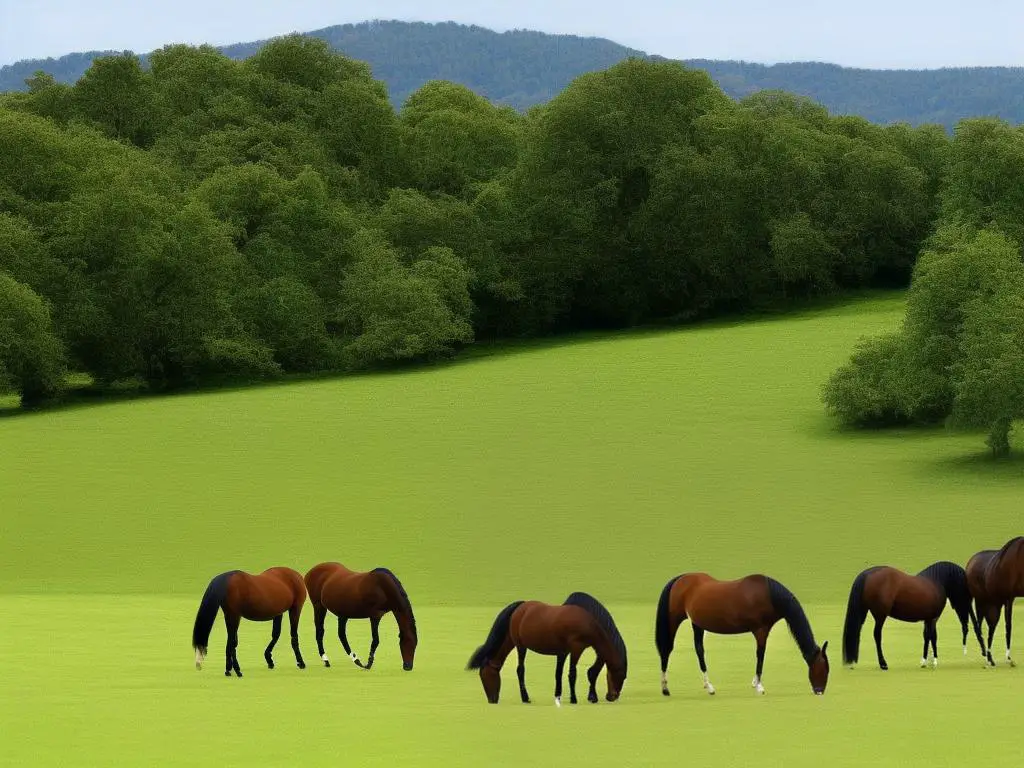
Through this in-depth exploration of the heritage, genetics, and practical aspects of breeding German Warmblood horses, a clearer understanding of these exquisite animals can be attained. Diligent care, proper management of breeding stock, and informed selection of mares and stallions are key factors in producing high-quality, healthy, and successful offspring. By prioritizing the welfare of both the breeding animals and their resulting foals, a legacy of excellence can be created and preserved within this remarkable group of equine athletes.